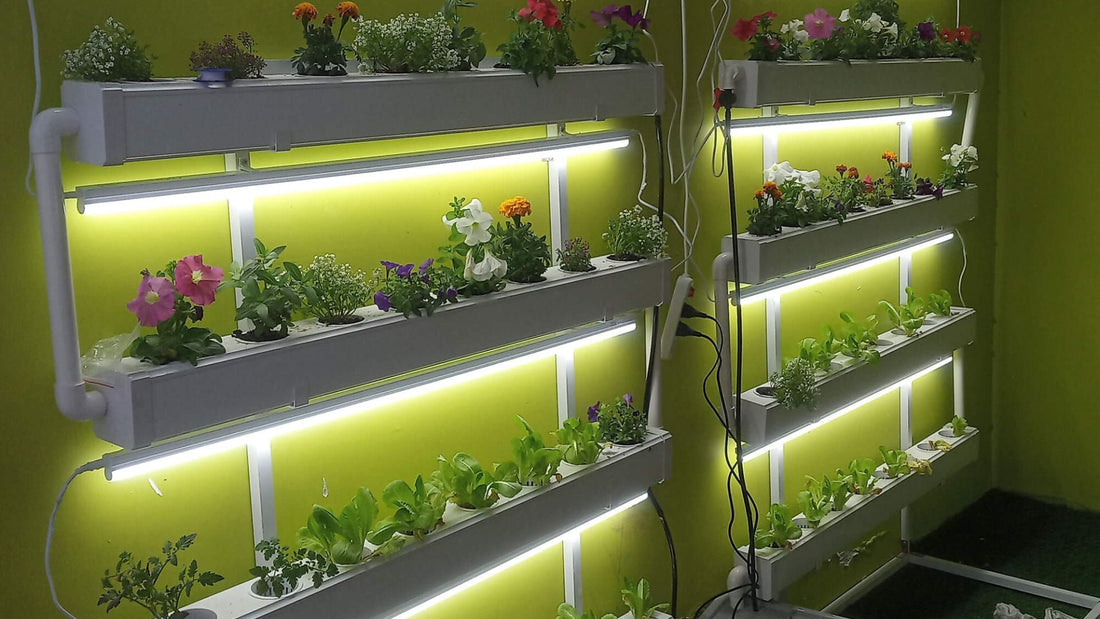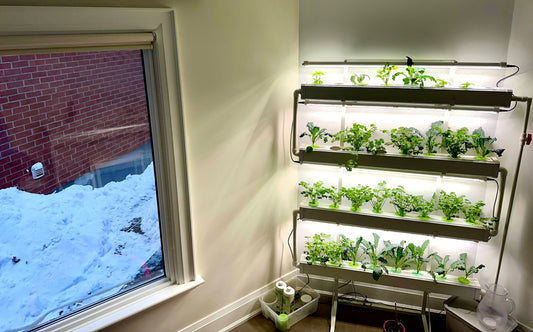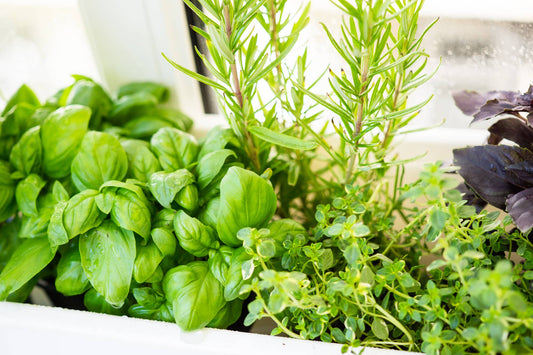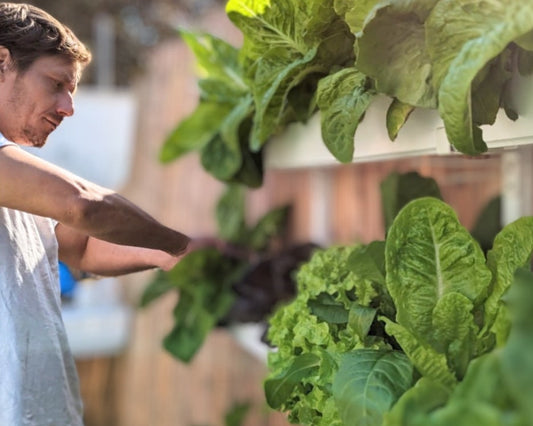Ready to watch your hydroponic garden truly thrive?
A critical element lies in understanding and optimizing one crucial factor: lighting.
It’s the powerhouse behind thriving greens, enabling everything from seed germination to lush, vigorous growth.
In this guide, we'll explore the fundamentals of lighting, blending both natural and artificial sources to guarantee your garden's success.
Let’s dive in and discover how the perfect lighting setup can transform your hydroponic garden into a flourishing oasis all year round.
Understanding Plant Lighting Needs
Just like water is essential for survival, light plays a non-negotiable role in the growth of hydroponically grown plants. Let's break down the basics:
- Why Light Matters: Plants need light to carry out photosynthesis, essential for their growth and health. Inadequate light can lead to weak growth or even the death of the plant.
- Spectrum Significance: Plants require different colors of light at various growth stages. Blue light promotes vegetative growth, while red light is needed for flowering and fruiting.
- Intensity and Duration: The right amount of light and the length of exposure are crucial. Plants need a specific intensity and period of light each day for optimal growth.
- Adapting to Plant Needs: Different plants have varied light requirements. Adjusting your lighting setup can help meet these needs and ensure your plants flourish.


Lighting Options for Your Hydroponic Garden
Ensuring your hydroponic plants soak up enough light is critical to their happy growth. Let's take a look at the most popular lighting choices for hydroponic enthusiasts:
- Sunlight: Nothing beats the sun! It showers plants with a full spectrum of light, vital for their growth. Remember that the sun's generosity can change with the seasons and weather.
- Artificial Lighting: When sunlight is lacking, LED lighting shines. They're efficient, adjustable, and provide precise light wavelengths for every plant growth stage.
- Balancing Both: Ideally, a combination of natural and artificial light provides the most effective solution. This combo aims to give your plants the consistent light they need all year round.


Customizing Lighting for Different Plants in Hydroponics
Got a mix of plants in your hydroponic garden? Each one craves a different amount of light:
- High-Light Plants: Examples include tomatoes and peppers, which thrive with around 8-14 hours of light daily.
- Low-Light Plants: Shade-tolerant plants like lettuce and spinach do well with about 3-6 hours of direct light.
- Day-Neutral Plants: Some plants, such as strawberries and cucumbers, are flexible with their light requirements and can adapt to various light durations.
Managing the light needs of a diverse garden can seem daunting, but it’s completely manageable with a bit of planning and the smart use of timers to keep everything on track.


Optimizing Light for Hydroponic Systems
Setting up your hydroponic garden for optimal light exposure is simpler than it might seem:
- Know Your Plants' Needs: This guides where to place them and whether they need additional light sources.
- Timers Are Your Friends: They can automate light cycles, simulating natural daylight changes without manual intervention.
- Observe and Adjust: Keep an eye on your plants. Stretching towards the light or signs of burning means it's time to tweak their light exposure.


Your Hydroponic Lighting FAQs
When it comes to lighting, hydroponic gardeners often have a few questions:
-
Should Grow Lights Be On All The Time?
No, plants benefit from a cycle that mimics natural daylight, usually around 12-16 hours of light followed by 8-12 hours of darkness.
-
What's the Best Light for Hydroponics?
LED grow lights are highly recommended. They are praised for their efficiency, longevity, and ability to provide a targeted light spectrum, making them a cost-effective choice in the long run.
-
What Should the Distance be Between LEDs and Plants?
This can vary, but starting with the lights about a foot above the plants is a good rule of thumb. Adjust based on plant growth and response.


Light Your Way to Hydroponic Success
Navigating light management in hydroponics is simpler than you might think. Whether mixing sunlight with artificial lights or finding that perfect setup, your goal is to give your plants the right light to flourish.
Don't hesitate to experiment and observe—this will help you discover the ideal lighting balance for a thriving garden.
Ready to start growing? Check out our home hydroponic kits or get in touch for expert advice. Step into the world of hydroponics and watch your garden transform into a lush, flourishing oasis.
Why Nature Tech?
- Our hydroponic systems save up to 90% more water than traditional growing methods.
- All hydroponic growing systems are designed for modern life with maximum yield, minimum effort, and endless beauty & joy.
- Our systems are made of food-safe plastics that don't contaminate the water with unhealthy compounds.
- Our compact and adaptable set-up can be used in large indoor spaces or a small balcony – wherever you choose, your plants will flourish.
- Our home-growing systems are easy to use - even for beginner gardeners!
- With our systems, your plants grow up to 3x faster than in soil, so you’ll save more time!
- We’re here to offer help every step of the way. If you need advice or have any doubts, feel free to reach out to us!




